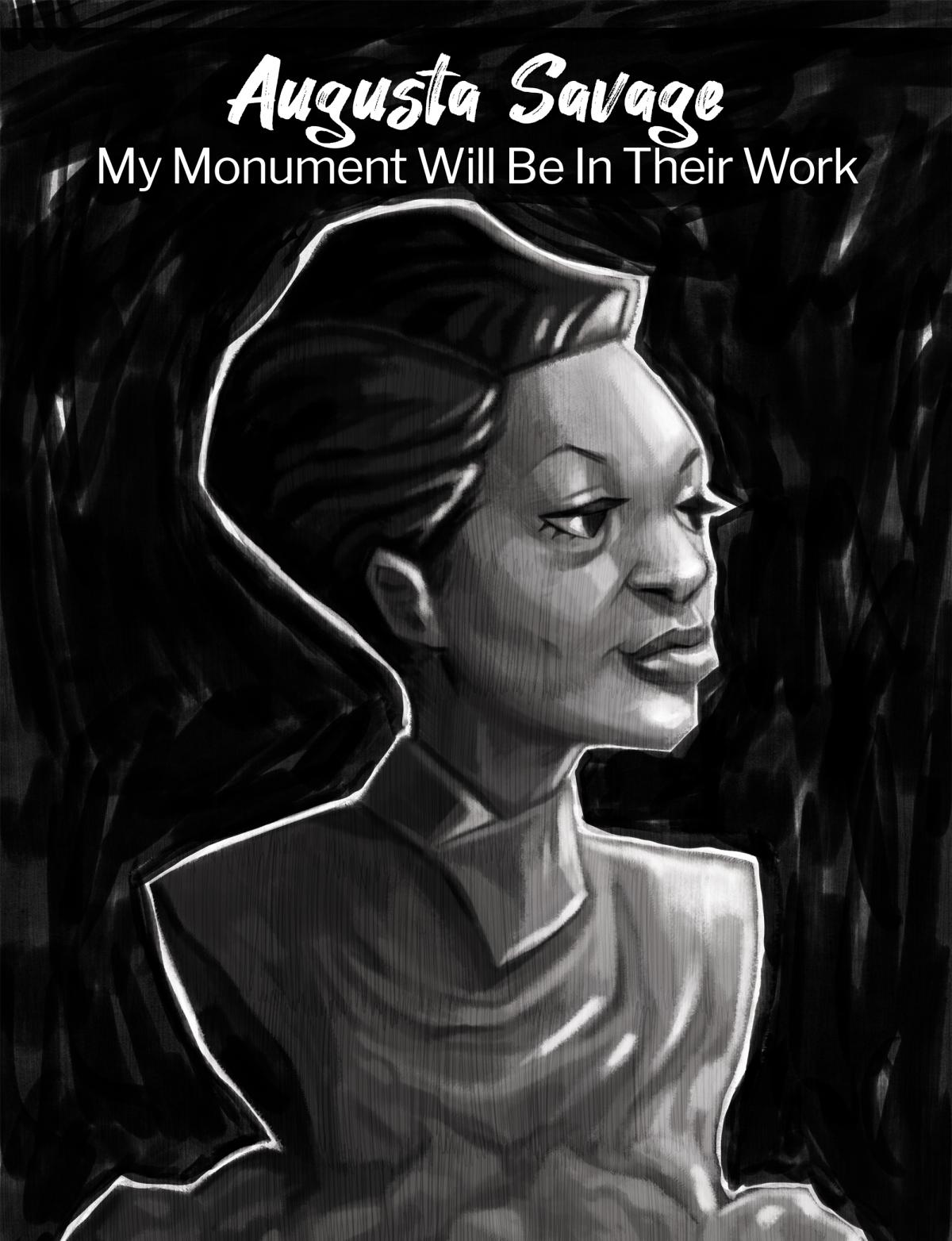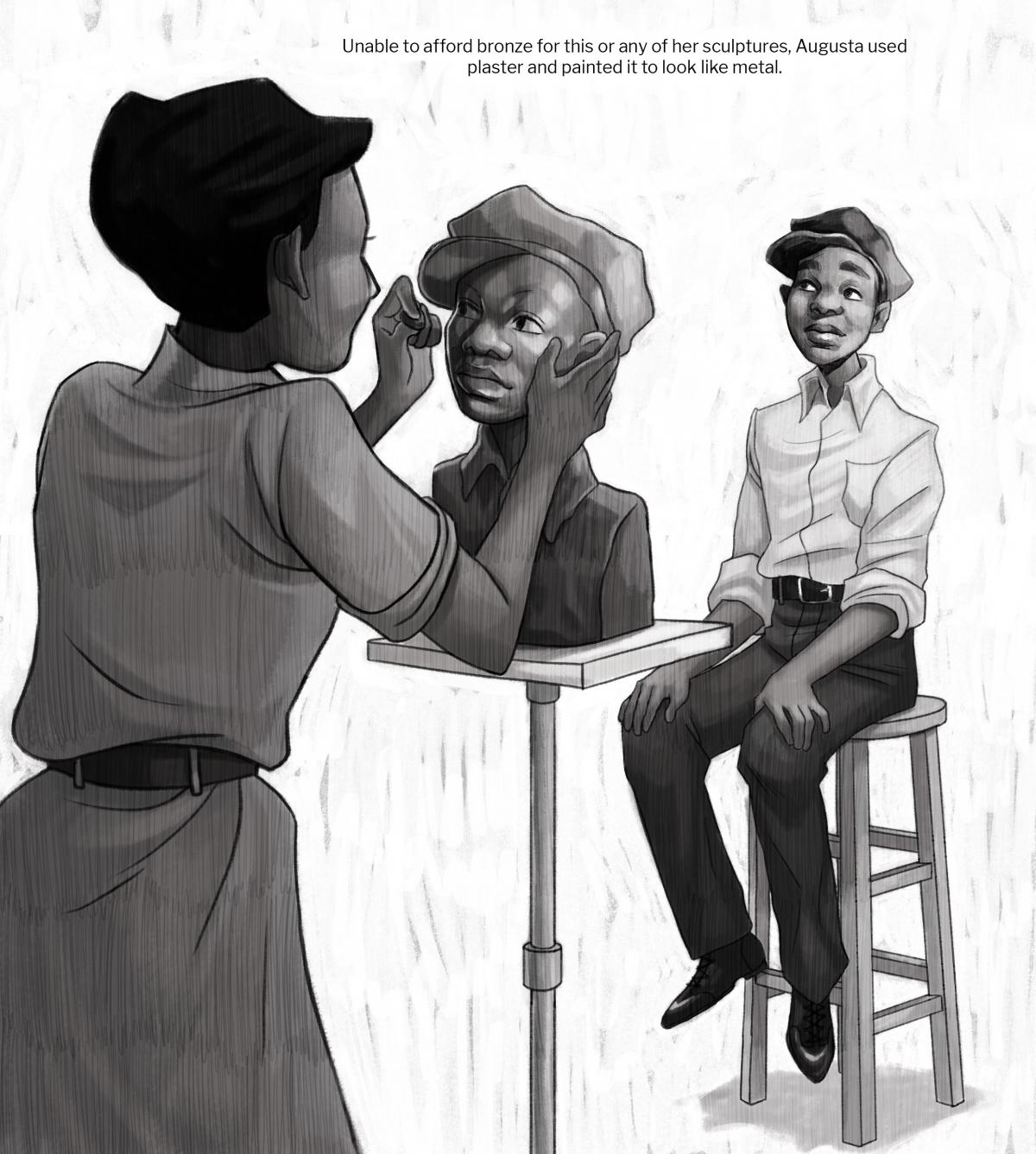
An important sculptor during the Harlem Renaissance of the 1920s and 1930s, Augusta Savage was born Augusta Christine Fells in Green Cove Springs, Florida, on February 29, 1892. The seventh of fourteen children, her father did not support his daughter’s early interest in art and in fact “almost whipped all the art out of me,” Augusta recalled later in life. Her difficult childhood, persistence, and obvious talents are part of what makes her story so important and inspiring. Despite her circumstances, she created art when she could, and, in 1927, she received a special prize and ribbon of honor for work she submitted to the West Palm Beach County Fair.
That little bit of success was enough to propel her forward both artistically and geographically. She headed to New York where she arrived with less than five dollars in her pocket, moved into a tiny studio in Harlem, and started taking classes at the Cooper Union School of Art. She became part of the art world’s vibrant, tight-knit community, creating busts of prominent luminaries such as W. E. B. Du Bois and Marcus Garvey. Her best-known work of the 1920s was Gamin, an informal bust portrait of her nephew, which has pride of place in SAAM’s collection.
Oliver Stephenson, an illustration student at the Ringling College of Art and Design, captures Augusta’s journey as if he were a composer putting notes down on a score. In fact, there is something very musical about Oliver’s black-and-white illustrations which move across the page with the elegance of a silent movie. Oliver mentioned that he likes to bring a vintage feel to his work and references styles from the past.
Oliver continues Augusta’s story with her scholarships to study abroad and her use of plaster to create her works because she could not afford to work in metal. It is a touching detail that brings a richness to the story as you wonder what more she could have achieved. . She spent much of her life dedicated to teaching the next generation of aspiring artists stating, “I have created nothing really beautiful, really lasting, but if I can inspire one of these youngsters to develop the talent I know they possess, then my monument will be in their work.”
The entire comic sings with the highs and lows of an important artist who overcame diversity to become an influential artist and educator. In Oliver’s hands, her story resonates.
This comic is part of a series Drawn to Art: Tales of Inspiring Women Artists that illuminates the stories of women artists in the collection of the Smithsonian American Art Museum. Inspired by graphic novels, these short takes on artists’ lives were each drawn by a student-illustrator from the Ringling College of Art and Design.
We invite you to read the comic and share with your friends and young people in your life.



















